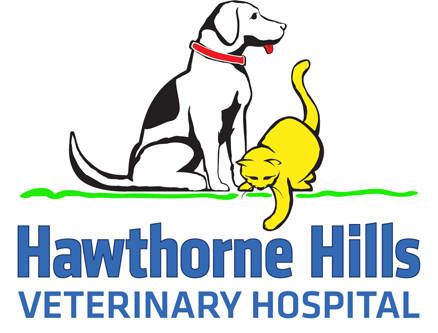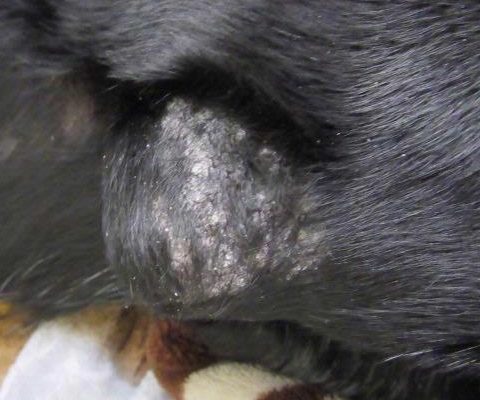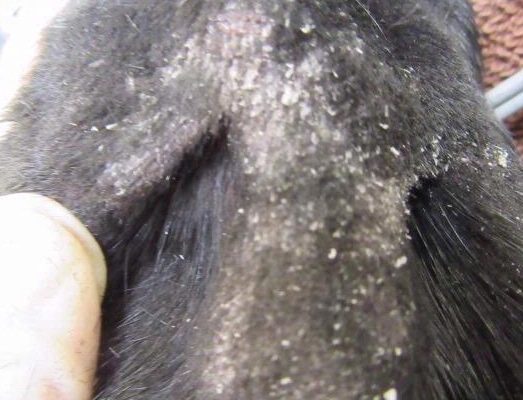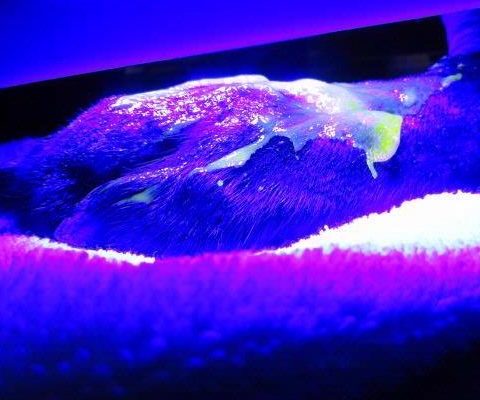
Tango has agreed to share his skin story so that other pets can experience the benefit of a new therapy to help the skin heal. Tango is an active almost 12-year-old Black Lab who loves to swim. Following a visit to Lake Chelan in October, he started licking at his front legs and paws to the point that the fur was missing. Anyone who has listened to their pet ‘slurping’ while licking at their paws or skin, knows how annoying that can be for the pet and their people! Getting a resolution to the skin issue was important.
In Tango’s case, he has not had a history of allergies, and there was nothing to suggest an injury. During his appointment at Hawthorne Hills Veterinary Hospital, we collected skin scrapes to look for any evidence of mites, yeast organisms, and bacteria. Fortunately, no mites or yeast were found, which was good news. However, we did identify a significant increase in cocci bacteria. Some bacteria could be normal, but this bacterial population was also accompanied by an increase in inflammatory cells which was consistent with pyoderma, or infection in the skin.
The pictures above show the fur loss on his paws, the thickened skin and fur loss on his elbow.
The pictures below show the heavy dander on one paw and the extent of the skin lesions once the fur was shaved.
Tango was started on Apoquel to address the itch, and Cephalexin to treat the bacterial infection. We wanted to try out our new Phovia Light Therapy to judge how Tango’s skin would respond, so we administered the first two Phovia treatments on each location where the skin was affected. Our team treated his front paws, both forelegs and we included Tango’s elbows as he also had some superficial elbow calluses.
In addition, or instead of the oral antibiotics, some patients are treated with medicated shampoos, which can be helpful especially if the areas affected are large. Bathing is generally needed 2-3 times weekly, which can be easy or challenging, depending on the patient’s skin lesions and your ability to bathe your pet at home.
Here are some photos to illustrate the healing progress. The goal is to get clinical resolution – reduce patient discomfort, eliminate the infection, and help the skin return to normal. Tango quit licking within a few days, and the skin lesions began healing within a week. Within 2-3 weeks, the fur has almost completely regrown.
Some of the skin conditions that are amenable to Phovia are: infections, traumatic wounds, lesions from persistent licking, hot spots, bite wounds and surgical wounds. For some very chronic skin infections, especially areas such as long-standing elbow calluses, the skin may never return to normal, but if we can eliminate the infection, licking, chewing, and pain associated with lesions, then this leads to an important improvement in your pet’s life.
HERE’S HOW IT WORKS:
The Phovia system ‘uses light energy to speed healing.’ It is a ‘fluorescent light energy that uses non-ionizing forms of light sources in the visible and near infrared spectrum.’ The gel splits the light energy into 4 different
The light therapy has been shown to speed healing, by stimulating several growth factors within the skin. You can read the details of one study that compared surgical healing of an incision – one half treated with the Phovia and the other half of the incision left to heal without treatment. Study: Improved Healing of Surgical Wounds with Phovia Treatment
The treatments in-hospital by our trained staff are painless and comfortable for your pet:
- The area to be treated is cleaned of any skin debris; the fur is shaved if needed
- Protective eye wear and gloves are donned by the team
- The Phovia chromophore gel is mixed and applied to the skin area
- The Phovia lamp which emits blue, low energy light, is held over the area to be treated; each session lasts 2 minutes. An area can be treated 2x at each appointment.
- Treatments can then be repeated as determined by the doctor – generally 1-2 times weekly until there is clinical resolution.
The images above show the Phovia gel and light source, Tango’s paw after cleaning and applying the gel, and two photos showing the light treatment. We have gloves and protective eye wear on, and Tango’s eyes are turned away from the light to avoid any injury. He was comfortable and happy to have a hug during his treatments.
If you think your pet has skin lesions that could benefit from Phovia Light Therapy, please request an appointment so that our doctors can evaluate your pet and discuss the options.
PHOVIA – information for pet owners
PHOVIA – Before & After photos












